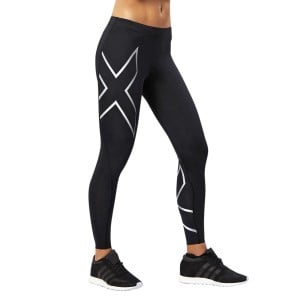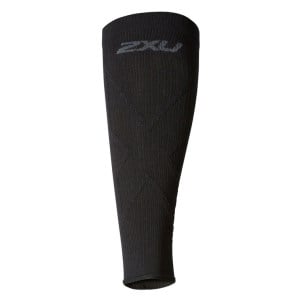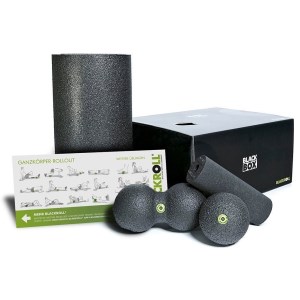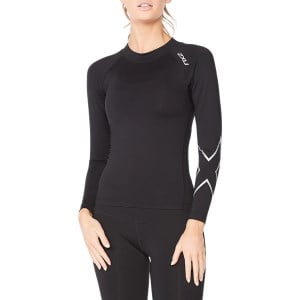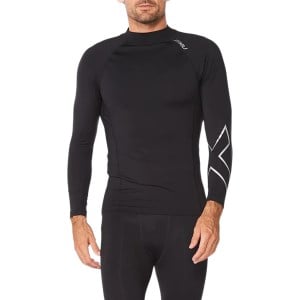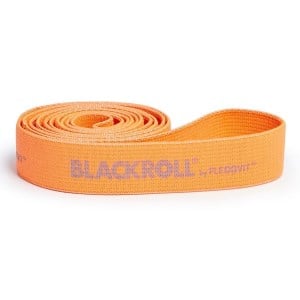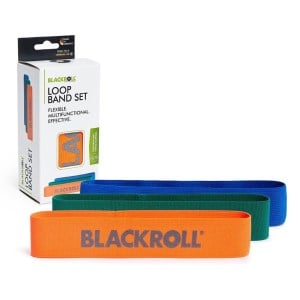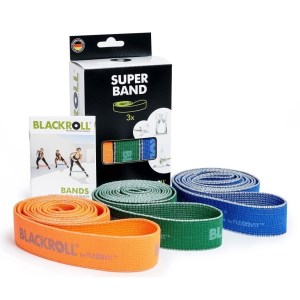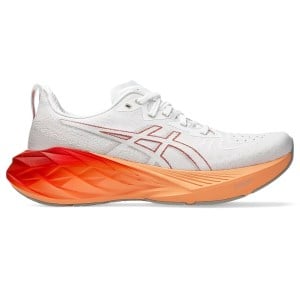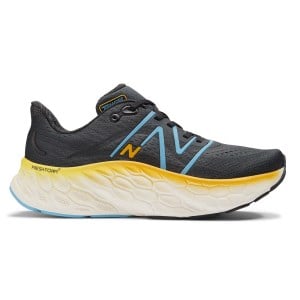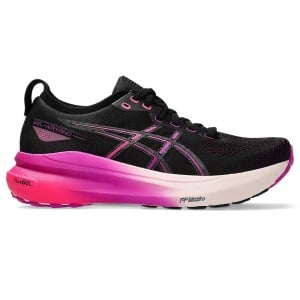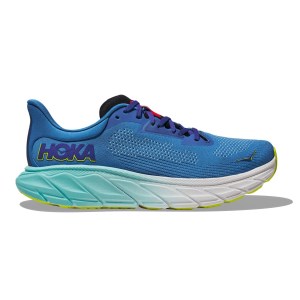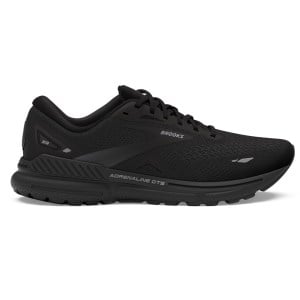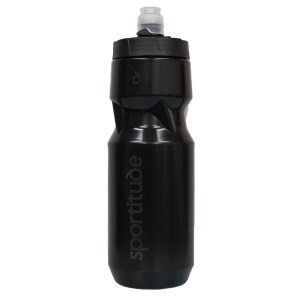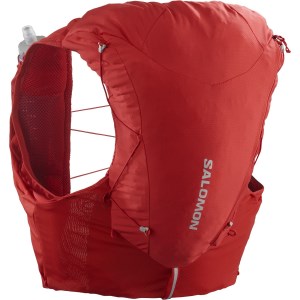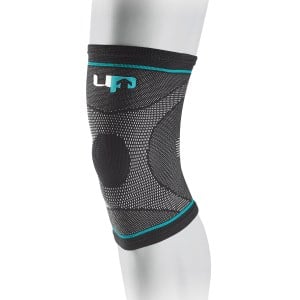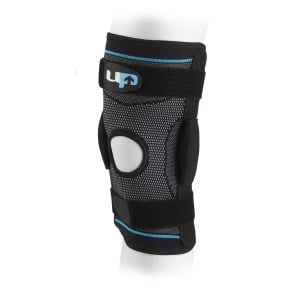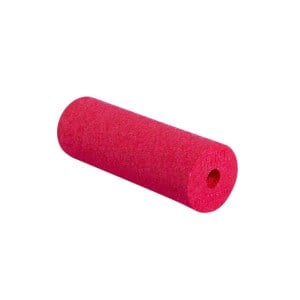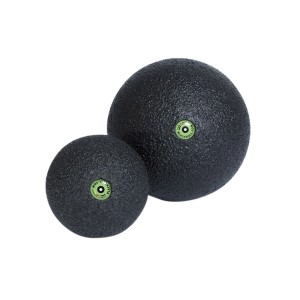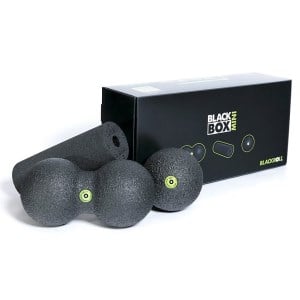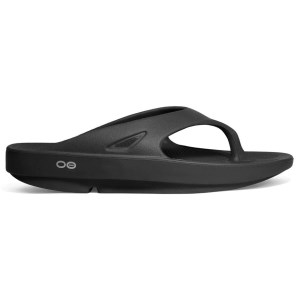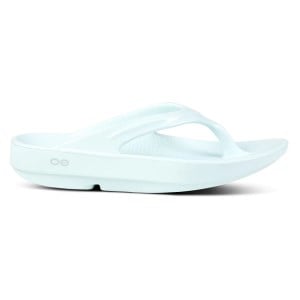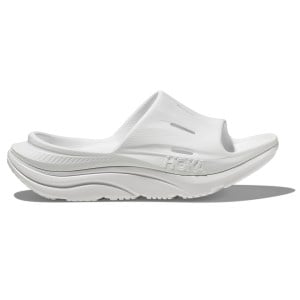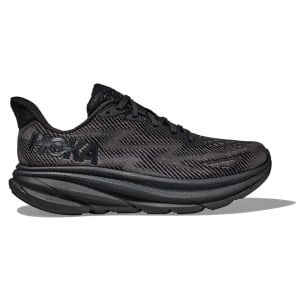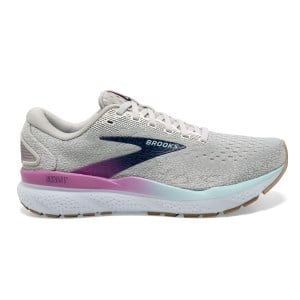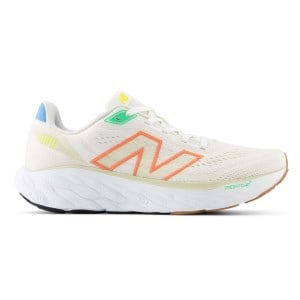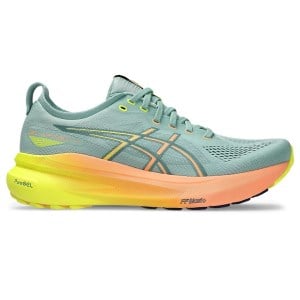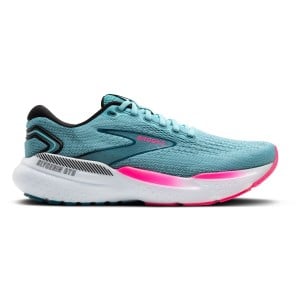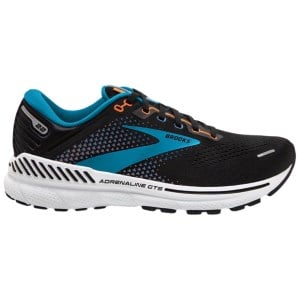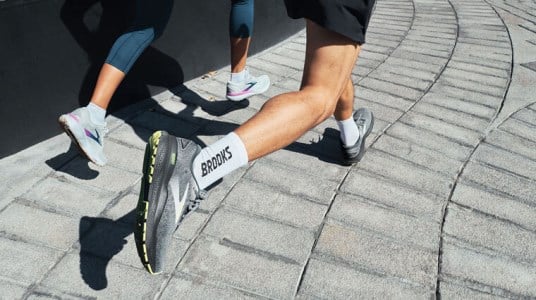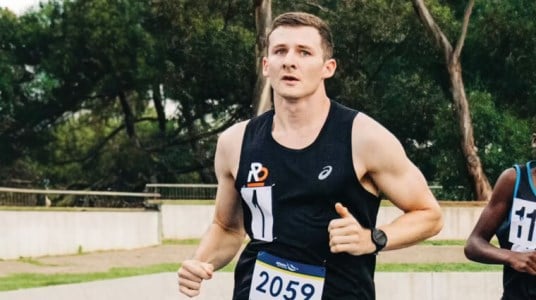Should You Push Through The Pain? Running Injuries & How To Prevent Them

Push through the pain. You’ve heard it before, but is this really the right thing to do?
Pain or the anticipation of pain can spark anxiety or put your training off track. On the other hand, many runners - whether beginners or seasoned marathon runners - choose to ignore pain, unaware that it may grow into full-blown injury and turn into a major setback.
In this article, you'll learn how to differentiate normal running discomfort from injury-associated pain and discover a snapshot of common running injuries to guide your choices as you put your best foot forward.
You'll also find preventative solutions to stave off running-related discomfort and pain, before it arises. This includes buying the best running shoes for you, taking care of your feet with cushioned recovery shoes, and the massage and recovery tools that can make a world of difference in alleviating soreness to keep you on track of your training.
Discomfort vs pain
We all experience ‘niggles’ when pounding on the pavement; those pesky sores, twinges and aches that distract our focus. Although we all have a different pain tolerance, there are ways to deal with running discomfort. Discomfort tends to be mild, dull and short-lived, reducing as you stop or slow down the pace. It usually takes form as a more generalised soreness or fatigue of the muscles.
Pain on the other hand is often sharp, constant or targeted at a specific joint. It may occur suddenly and unexpectedly and be accompanied by swelling and inflammation that doesn’t alleviate in a short period of time.
Pain is a self-preservation mechanism that exists for a reason, signifying when you should stop or seek medical attention to prevent risk of developing or further exacerbating injury.
Do a head-to-toe body scan
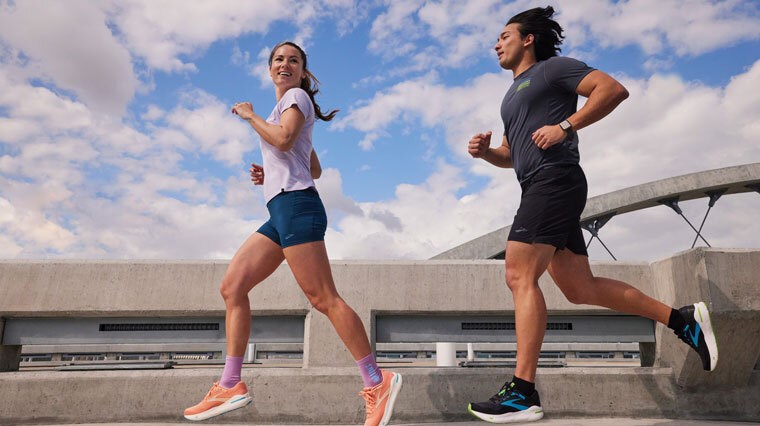
Doing a mental body scan while running allows you stay in tune with your movement and to make any tweaks necessary to improve your running form. It can also allow you to identify discomfort or pain.
Check out these proper running form tips for guidance:
- Head: Keep your head looking forwards, and chin slightly tucked in.
- Shoulders: Keep your shoulders relaxed, not slouched.
- Arms: Keep your arms swinging forward (not crossing your midline) at the level between your chest and waist, with elbows at about a 90 degree angle.
- Hands: Keep your hands relaxed, not clenched into fists. They can remain open or closed softly with fingertips just touching your palm if preferred.
- Torso: Keep your torso straight, not slouched for improved posture and lung capacity.
- Hips: Your hips should be naturally aligned with your head, shoulders and torso, facing forward.
- Knees/legs: Your knees should remain slightly bent for natural shock absorption.
- Feet: Aim for your feet to land beneath your knees/hips, your centre of mass, for lighter landings that avoid overstriding.
Rather than push through the pain, a better mantra may be to:
Assess the discomfort/pain - Whether it’s a sign of injury that needs to be addressed, or whether it’s non-injury related.
Accept the discomfort and carry on - If it’s minor and tolerable, it’s simply another challenge that will allow you to consequently build mental strength.
OR
Adapt to alleviate the discomfort and carry on - Consider slowing down the pace or adjusting your running form to help reduce the discomfort. You can also prepare for your runs as per the suggestions below.
OR
STOP - If it’s a sharp and severe pain, you may require medical attention.
It may not be as catchy as push through the pain, but the above mindset is more likely to keep you on track of your training rather than stuck on the sidelines with injury.
Common running discomfort: Adapt and carry on
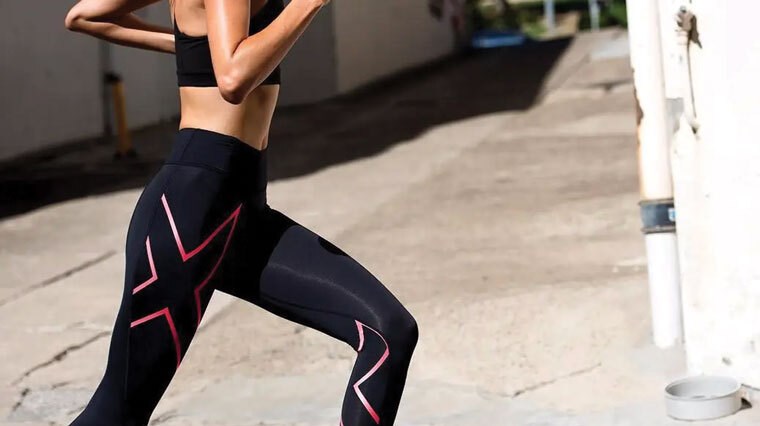
Dull burning sensation in your muscles
DOMS (delayed-onset muscle soreness), often referred to as 'muscle fever', may manifest as a temporary dull burning, aching or stiffness in your muscles and is typically experienced 24 – 72 hours post-workout.
Often considered ‘good pain’, DOMS is the result of the micro-tears in your muscles that occur during unfamiliar exercise, or when you increase your training load - whether in intensity, distance or frequency.
DOMS is a natural part of becoming a better runner, allowing your body to adapt and become more resilient as your muscles repair and strengthen. It is nothing to get your running shoe laces into a knot about, however it's important to make recovery a priority .
Compression tights or compression sleeves may minimise the discomfort or duration of DOMS by increasing the flow of oxygen-rich blood to your hard-working muscles to support muscle repair and recovery.
Your recovery strategy can benefit both your body and mind - helping you relax, rejuvenate and alleviate tension. Take care of your worn-out, tender muscles by including foam rolling or a massage gun in your post-run recovery routine.
If the DOMS you're experiencing perseveres beyond 4-6 days without improvement, it's likely a sign that you're overtraining and should consider taking a rest day and reducing your training load.
Top compression gear:
-
2XU Womens Compression Tights
-
2XU Mens Compression Tights - Black/Nero
-
2XU X Compression Unisex Calf Sleeves
Recommended recovery tools:
-
Blackroll Blackbox Set - Foam Roller & Massage Ball Set
-
Blackroll Running Box - Runner Training & Recovery Set
-
Blackroll Fascia Massage Gun
Burning sensation in your lungs
A burning sensation in the lungs is commonly experienced by beginner runners, often associated with the increased training load on your underworked respiratory system.
With regular exercise, your lungs will adapt and become stronger and more efficient, and you’ll feel less out of breath when running at an increased effort, especially if you put proper breathing technique into action.
This includes diaphragmatic ('deep belly') breathing and breathing with your mouth to increase your intake of oxygen while allowing you to expel carbon dioxide more effectively. If you are a new runner, begin at a conversational pace before building up the intensity.
Normally, the discomfort from a burning sensation in your lungs fades when you stop or slow the pace, but do consult a medical professional if you have exercise-induced asthma, chest tightness or recurrently experience lung pain post-workout.
Another potential cause of the burning sensation in your lungs when running is due to the dry air experienced in cold weather. In the chiller months, the demands on your respiratory system increase as your body works to humidify and warm the air to your core temperature. The moisture of the cells lining your trachea and nasal passages is diverted to humidify the air, resulting in the irritated or burning sensation.
Wearing winter-ready layers - a skin-hugging baselayer, cosy midlayer and weather-ready running jacket - can help reduce the demands on your body to generate warmth. Keeping hydrated by having a water bottle or hydration pack close and lowering the intensity of your runs in cold conditions may help reduce the burning sensation in your lungs.
Winter running layers for women:
-
2XU Ignition Thermal Womens Compression Long Sleeve Top
-
Ronhill Life Practice 1/2 Zip Womens Long Sleeve Training Top
-
Asics Fujitrail Womens Waterproof Running Jacket
Winter running layers for men:
-
2XU Ignition Thermal Mens Compression Long Sleeve Top
-
Ronhill Life Practice 1/2 Zip Mens Long Sleeve Running T-Shirt
-
Nike Trail Aireez Mens Running Jacket
Side stitches
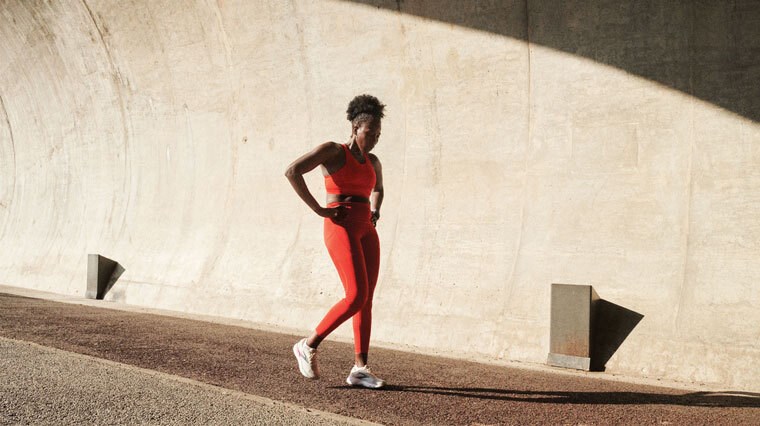
Side stitches, or exercise-related transient abdominal pain (ETAP) to be technical, are defined by a targeted pain on either side of your abdomen and slightly underneath your ribs - whether it feels stabbing and sharp, dull and aching, cramping or pulling.
Side stitches are often associated with pressure to the diaphragm, which refers to the dome-shaped muscle positioned beneath your lungs that divides your chest cavity from your abdominal cavity and that is essential for your respiration.
There is a lot of speculation as to what causes a side stitch for runners, however the evidence is unclear. A likely reason is that side stitches are a result of the 2-layered membrane lining of your abdominal cavity (peritoneum) becoming irritated. This may occur due to the friction between the tissue layers during your runs, including those that wrap beneath your diaphragm.
Typically, a liquid between these layers provides a barrier against friction, however its protective benefits may be compromised due to the increased movement during physical activities like running.
To reduce your susceptibility to side stitches, avoid eating a large meal up to two hours pre-run. This will help avoid your stomach putting pressure on the lining of your abdominal cavity. Instead, reach for light, nutrient-dense snacks like a banana or Greek yoghurt with fruit to provide fuel as your run approaches, and try to avoid sugary foods and drinks as they may increase your risk.
Hydrate with regular sips of water throughout the day, rather than overcompensating by drinking large gulps of water pre-run, which can also make your stomach feel bloated. You can practise proper breathing technique, aiming for deeper, fuller breaths with abdominal breathing to potentially ward off side stitches.
Consider a focus on strength training to improve the support of your abdominal organs with exercises that use your own body weight as resistance - from planks to push-ups, yoga to Pilates.
Resistance bands also have earned their place in your home gym, with resistance band exercises like glute bridges that can aid in core-strengthening that may also reduce your risk of both side stitches and running related injuries.
If you experience a side stitch during your run, take a walking break until the discomfort eases, pushing two fingers gently against the localised area as you inhale, and applying pressure as you exhale, to reduce friction.
Some runners have had success putting their hands on the back of their head to gently stretch their abdomen in the affected area, or bending over and touching their toes.
-
Blackroll Super Fitness Band - Light
-
Blackroll Loop Band Set - Fabric Resistance Band - 3 Band Set
-
Blackroll Super Fitness Band Set - 3 Band Set
Sore, tender and dull sensation of the feet or knees
Soreness in your feet or knees is a common condition endured by beginner runners as your body adapts to increased or repetitive impact stresses on hard road surfaces. Prioritise recovery to avoid overtraining and aggravating the discomfort.
When your body and mind feel fresh and ready to do so, gradually increase the distance or intensity of your training load to allow your muscles to strengthen and become more resilient over time.
You may also benefit from learning how to switch from road to trail running, as the softer, natural terrain of off-road can help take the pressure off your feet and knees compared to the consistent, unforgiving nature of roads or pavement.
Also, consider your running shoes. Ask yourself:
- Do my running shoes provide adequate cushioning and stability for my foot type? Are they the best running shoes for me?
- Are my running shoes ready to be replaced?
We'll connect you with a Sportitude running shoe expert for personalised guidance on your running shoe choices to fit your goals and your foot type. Many runners also have success equipping their go-to running shoes with a shoe insole to personalise the sensation underfoot in cushioning or stability characteristics.
Popular neutral cushioned shoes:
-
On Cloudmonster 2 - Womens Running Shoes
-
Asics NovaBlast 4 - Mens Running Shoes
-
New Balance Fresh Foam More v4 - Mens Running Shoes
Popular stability cushioned shoes:
-
Asics Gel Kayano 31 - Womens Running Shoes
-
Hoka Arahi 7 - Mens Running Shoes
-
Brooks Adrenaline GTS 23 - Womens Running Shoes
Heavy or ‘lead’ legs
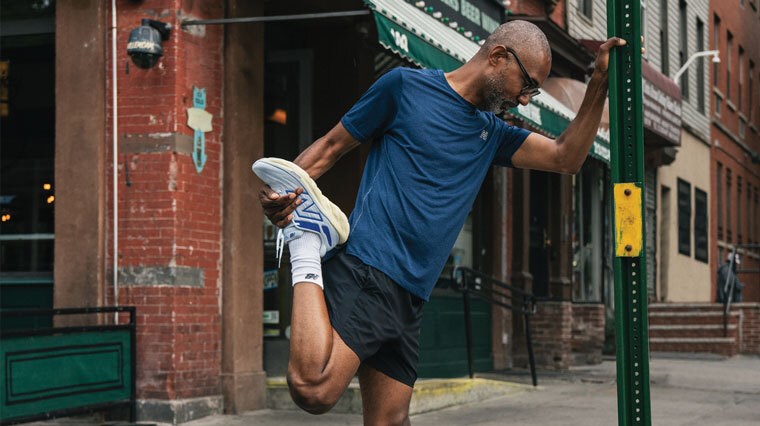
Why do my legs feel like lead when I run? The heavy, exhausted feeling in your legs, particularly as you increase mileage and intensity, may be a result of overtraining, requiring you to adapt your training plan and recovery strategy.
Other common reasons that your legs feel heavy or become tired quickly on your runs include your running shoes aren't providing enough support, or that your running form isn't as efficient or comfortable as it should be, potentially increasing stress to your muscles.
Overstriding, when you extend your legs far beyond your centre of mass when foot striking, may be the culprit. These jarring landings not only result in your legs fatiguing faster, but can exacerbate the stress to your foot, ankles, shins, calves, quads, knees and hips.
When running, aim for a higher running cadence (stride turnover). Running cadence refers to the steps you take per minute. You can increase your running cadence by taking shorter, quicker steps that land closer beneath your centre of mass.
Warming up pre-run with dynamic stretching for 10 - 15 minutes can help increase your muscle flexibility and boost blood circulation, keeping your legs feeling fresher and lighter for longer. Try 'moving' stretches that activate the muscles used during runs, such as lunges, leg swings or knee lifts.
Stay hydrated before, during and post-run with these tips on how to hydrate for short and long runs. This will help ensure that your blood volume is at a healthy level, keeping in mind the liquid component of your blood or plasma contains over 90% water. A well-hydrated body will help support the transport of oxygen and nutrient-rich blood to your active muscles to reduce the risks of cramps and fatigue.
Also, be cautious of fatigue that you do not normally experience at your current training level – inadequate sleep or iron deficiency may be the culprit. Your doctor can help guide you on whether this is an issue for you.
-
Sportitude Thirst Blast BPA Free Lockable Water Bottle 710ml
-
Nike BPA Free Sport Water Bottle - 600ml
-
Salomon ADV Skin 12 Set Unisex Trail Running Vest With Flasks
Common running injuries: Pain that shouldn't be ignored
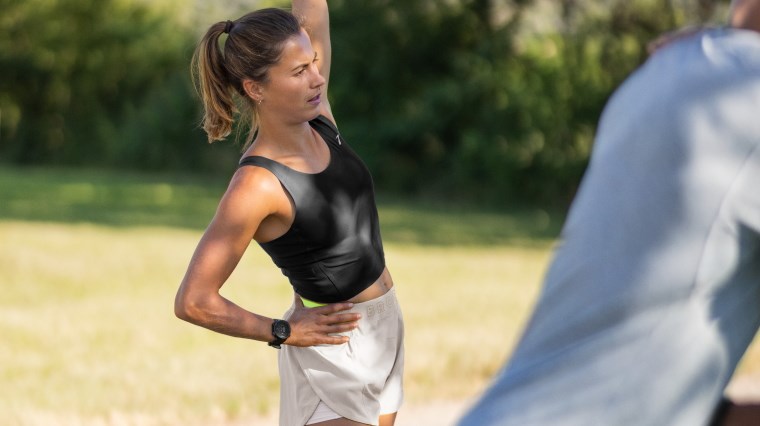
Runner’s knee
What is it? Also called patellofemoral pain syndrome (PFPS), runner's knee is often caused by repetitive stress to the knee joint or when the back of the kneecap becomes irritated, unable to slide smoothly through your femur (thigh bone) groove due to improper running form.
What does it feel like? A deep, sharp pain may be felt around the kneecap and typically intensifies when running on an incline or decline.
Management and prevention: Seek medical treatment. Avoid boosting mileage too quickly, ensure you warm-up and stretch adequately, practise proper running form and wear shock-absorbing, cushioned running shoes to reduce your risk in future.
If you're susceptible to knee injuries, you may benefit from a knee brace or knee support. Consult your doctor for personalised advice.
-
1000 Mile UP Ultimate Compression Elastic Knee Support
-
1000 Mile UP Wraparound Knee Brace
-
1000 Mile UP Ultimate Compression Hinged Knee Support
Stress fractures
What is it? Stress fractures are tiny cracks in the bone due to overuse and repetitive impacts.
What does it feel like? A sharp pain or tenderness isolated to the feet, shins, knees or hips.
Management and prevention: Running isn't recommended with a stress fracture, but your doctor may give you the thumbs up to do low-intensity cross-training that takes the pressure off your feet while the bone repairs. When you return to running, reduce your risk of stress fractures by gradually increasing mileage or intensity, ensuring you get a recommended daily intake of calcium and avoiding an overextended stride.
Shin splints
What is it? A running overuse injury resulting from small muscle tears in the lower leg. Overpronation, running in shoes with worn-out or insufficient cushioning and running on hard surfaces are contributing factors. Shin splints are common among beginners that are overusing underworked muscles or runners with pre-occurring injury.
What does it feel like? Pain is targeted at the front leg along the tibia (shin bone) that runs between the knee and ankle. The area will ache, feel sore and sensitive.
Management and prevention: Stop running, ice the area to minimise inflammation and seek the professional medical expertise of your doctor.
Assess your running shoes with the guidance of your podiatrist or physiotherapist. Do they provide adequate stability or motion control for your foot type?
Once fully recovered, reintroduce running gradually in incline, distance and intensity. Avoid overstriding and practise proper running form to reduce your risk.
Achilles tendonitis
What is it? An inflammation of the tendon that stretches between your heel and calf muscles. It's often experienced by runners with low arches or those that have rapidly increased intensity or distance. It can occur both as an overuse injury that builds up over time or suddenly.
What does it feel like? Typically marked by a sharp or dull pain at the back of the heel. It can take form as a burning or stabbing pain, comparable to the feeling of being suddenly kicked in the heel. It may begin as a slight pain that intensifies over time with inadequate rest.
Management and prevention: As your calf muscles fatigue or tighten, the load on the Achilles increases, putting you at greater risk. It’s important to stretch your calves adequately as a preventative measure. Applying a foam roller to the calf muscle can be a relaxing and effective method to achieve this.
If you think you may be experiencing Achilles tendonitis stop running, ice the area and consult a medical professional, particularly if a lump develops. Allow your heel to heal by only performing low-impact, non-weight bearing activities such as swimming or pool running until fully recovered.
Plantar fasciitis
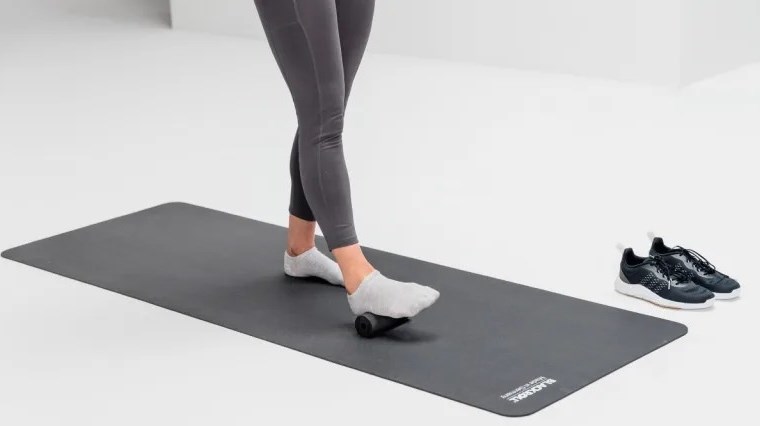
What is it? Heel pain or inflammation resulting from excess stress to the plantar fascia (a connective, weight-bearing tissue between the base of your toes and heel) that supports the arch of your foot.
What does it feel like? Sufferers of plantar fasciitis may experience pain at the base of the foot, particularly in the heel but also underneath the midfoot. It can be a deep, dull, sharp or stabbing pain or ache that's often the most painful in the morning when you first stand on it.
Management and prevention: Plantar fasciitis may occur as a repetitive stress injury, be associated with overpronation, under pronation / high arched feet, inadequate stretching of the calf, overstriding, running on hard surfaces, wearing worn-out running shoes, running shoes with insufficient arch support for your foot type or excessive hill runs or speedwork.
Seek the advice of your doctor. Icing the area to reduce swelling and minimising the load on the plantar fascia by cutting back on your runs will aid in recovery. Stretching the feet and calves can help alleviate pain, as can gentle rolling/stretching of the area with massage and recovery tools like massage balls and mini foam rollers, allowing the base of the arch to lengthen.
Many recovery shoes from Hoka and OOFOS have optimised cushioning to alleviate pain associated with plantar fasciitis. Your podiatrist or physiotherapist can also guide you on the best running shoes for you if you're susceptible to plantar fasciitis.
Massage tools for plantar fasciitis:
-
Blackroll Mini Foam Roller
-
Blackroll Massage Ball - 8cm
-
Blackroll Blackbox Mini Set – Foam Roller & Massage Ball Set
Recovery shoes for plantar fasciitis:
-
OOFOS OOriginal - Unisex Recovery Thongs
-
OOFOS OOlala - Womens Recovery Thongs
-
Hoka Ora Recovery Slide 3 - Unisex Slides
Neutral running shoes for plantar fasciitis:
-
Hoka Clifton 9 - Mens Running Shoes
-
Brooks Ghost 16 - Womens Running Shoes
-
New Balance Fresh Foam X 880v14 - Womens Running Shoes
Stability running shoes for plantar fasciitis:
-
Asics Gel Kayano 31 - Mens Running Shoes
-
Brooks Glycerin GTS 21 - Womens Running Shoes
-
Brooks Adrenaline GTS 22 - Mens Running Shoes
Contact our Sportitude shoe experts for guidance on fitting appropriate running shoes for your foot type to reduce your risk of running related injury.
Please note: This blog is for educational purposes and is not a substitute for professional medical advice. If you have any concerns, sudden or reoccurring pain, please consult a medical professional.

